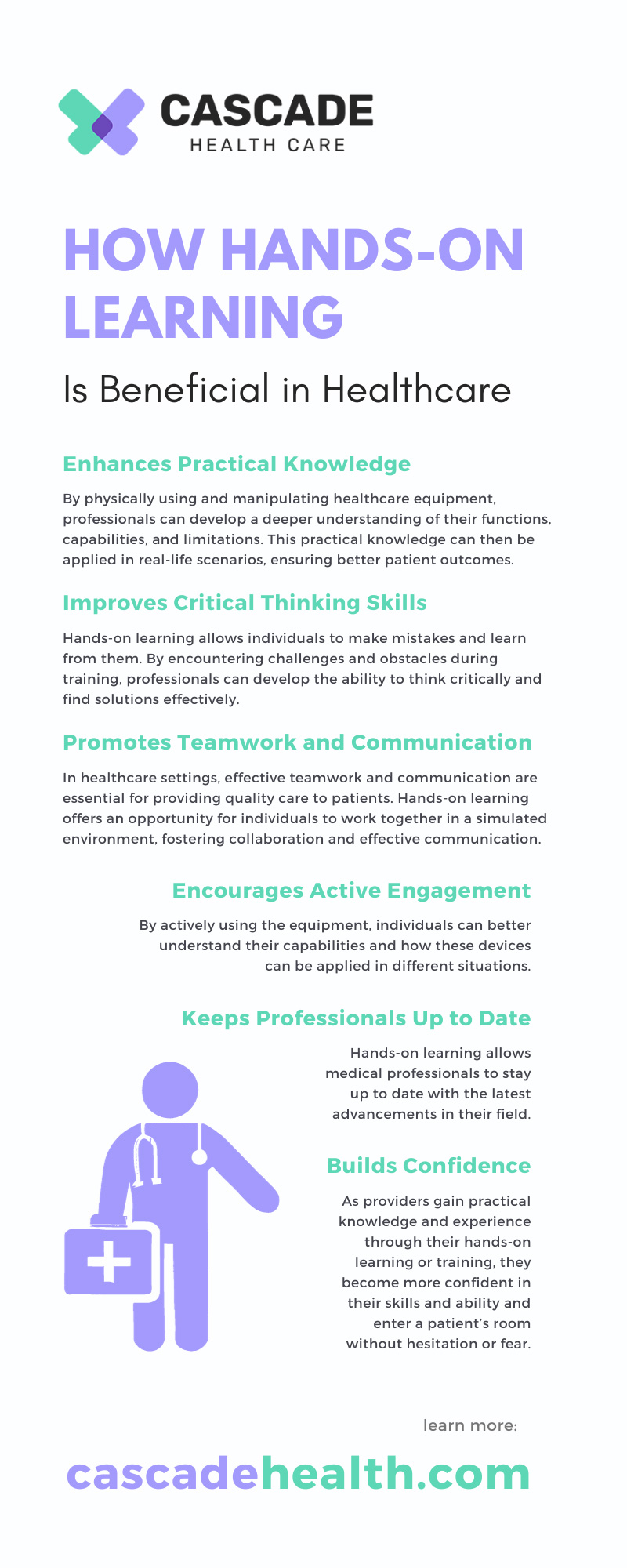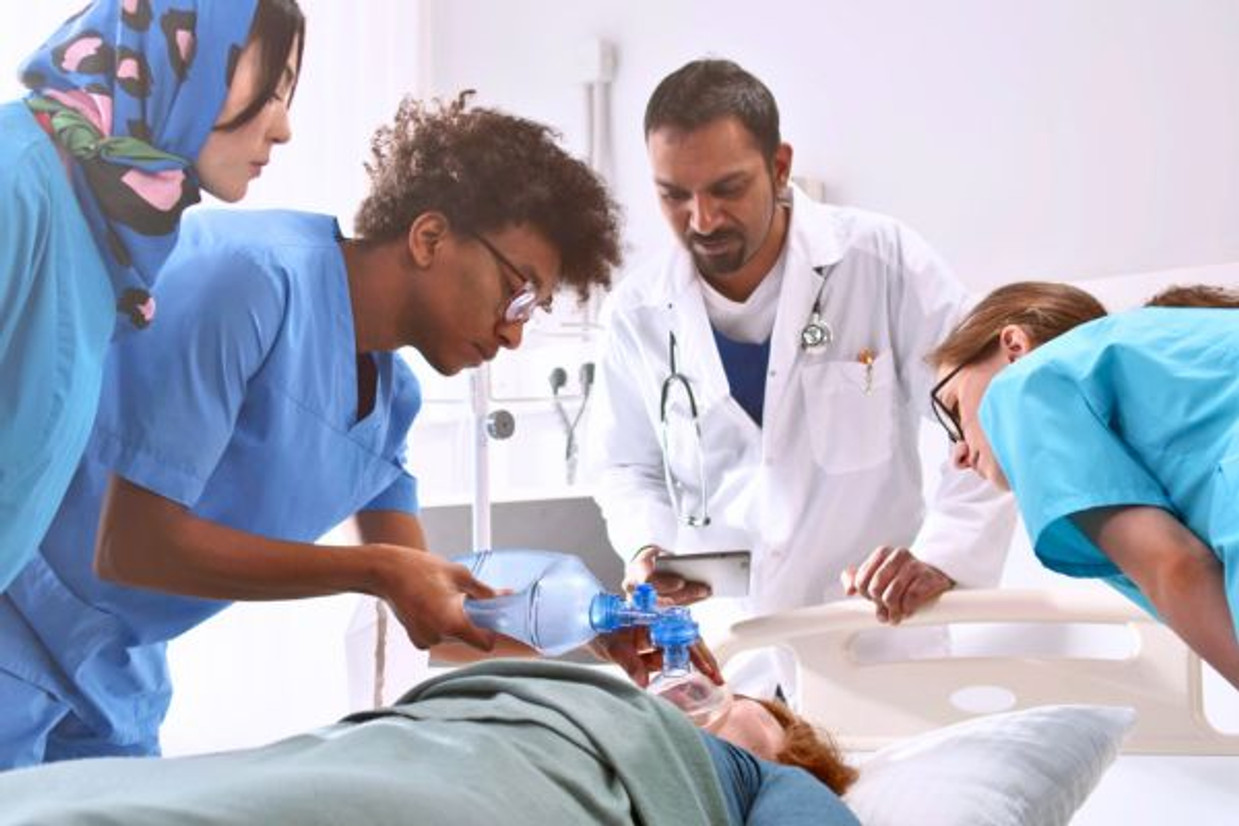How Hands-On Learning Is Beneficial in Healthcare
The healthcare industry is constantly advancing as new technology emerges and ground-breaking treatments are developed. As a result, it is crucial for healthcare professionals to stay up to date with the latest equipment and techniques. This is where hands-on learning comes into play.
Hands-on learning, also known as experiential learning or active learning, is a teaching method that involves practical hands-on activities and exercises. Applying this teaching format allows healthcare personnel to engage in real-life scenarios to gain experience, knowledge, and insight into practical assessments. In the healthcare industry, this can range from using medical equipment to practicing in-depth clinical procedures. Discover how hands-on learning is beneficial in healthcare and gain insight into the importance of quality supplies when teaching the curriculum.
Enhances Practical Knowledge
One of the primary benefits of hands-on learning in healthcare is that it allows professionals to gain practical knowledge and experience. Unlike traditional classroom lectures, hands-on learning provides an opportunity for individuals to actively engage with the equipment and procedures they will encounter in their daily work.
By physically using and manipulating healthcare equipment, professionals can develop a deeper understanding of their functions, capabilities, and limitations. This practical knowledge can then be applied in real-life scenarios, ensuring better patient outcomes. Whether students or professionals are visual learners or not, the hands-on process equips individuals with real-time practice that is applicable when they’re working with patients.
Improves Critical Thinking Skills
Hands-on learning is also beneficial for improving critical thinking skills. As healthcare professionals engage in practical exercises, they are forced to think on their feet and problem-solve in real time. This is especially crucial in emergency situations where quick thinking and action can be a matter of life or death.
Additionally, hands-on learning allows individuals to make mistakes and learn from them. By encountering challenges and obstacles during training, professionals can develop the ability to think critically and find solutions effectively. Most often, individuals learn the most during the trial-and-error period, and hands-on learning offers this experience by default.
Promotes Teamwork and Communication
In healthcare settings, effective teamwork and communication are essential for providing quality care to patients. Hands-on learning offers an opportunity for individuals to work together in a simulated environment, fostering collaboration and effective communication.
By practicing procedures with fellow professionals, individuals can learn how to effectively communicate information, delegate tasks, and work together toward a common goal. This not only improves patient care but also creates a supportive and cohesive work environment. When professionals are just starting out, these efforts can pave the way for them to understand why effective communication in the work environment is crucial for providing optimal patient care. For instance, they may encounter scenarios where time is precious, and accurate communication can be the difference between immediate, precise care or a breakdown in understanding patient needs that hinders the administration of proper care.
Encourages Active Engagement
Hands-on learning is an active form of education that promotes engagement and participation. Traditional classroom lectures can often be passive, leading to limited retention of information. However, when individuals actively engage in hands-on activities, they are more likely to retain the information and skills learned.
This is particularly beneficial when it comes to learning about new healthcare equipment and technology. By actively using the equipment, individuals can better understand their capabilities and how these devices can be applied in different situations. Professionals should not forgo the assessment portion of their education, but pairing standard lectures with hands-on engagement can improve their learning experience and increase their chances of offering safe, ethical care in the future.
Keeps Professionals Up to Date
The healthcare industry is continuously evolving, with new equipment and techniques being introduced regularly. Hands-on learning allows medical professionals to stay up to date with the latest advancements in their field. This method also grants individuals practical assessment periods to work with new devices their facility or practice acquires.
Attending hands-on training sessions or workshops gives professionals a chance to learn about new equipment and techniques, ensuring they are prepared with the necessary skills to provide the best possible care for their patients. It’s vital for medical providers to understand how devices and equipment operate before integrating them into patient care practices. Additionally, the hands-on and exploratory phase with new equipment ensures professionals can make the most of the latest equipment and optimize their processes before administration.
Builds Confidence
One of the most significant and beneficial reasons to use hands-on learning in healthcare is to help professionals build their confidence levels in clinical settings. A timid or unsure provider can lead to a buildup of fear or angst among patients, potentially creating an inaccurate and unhealthy environment for patients.
Patients can pick up on a provider’s confidence level through various non-verbal communication cues, which means maintaining patient confidence in the professional’s skills can help alleviate these situations. As providers gain practical knowledge and experience through their hands-on learning or training, they become more confident in their skills and ability and enter a patient’s room without hesitation or fear. This confidence directly impacts overall work performance, patient care, and other practical clinical factors, such as teamwork and collaboration efforts.
Reinforces Safety Protocols
In the healthcare industry, safety is of the utmost importance. Hands-on learning provides an opportunity for professionals to practice safety protocols and procedures in a controlled environment. With newly obtained confidence utilizing various devices or skill sets, professionals reduce their safety risks significantly; this benefits not only the patients but also the healthcare industry as a whole. By familiarizing themselves with basic safety procedures and protocols, individuals can ensure ethical patient care and outcomes. It’s also worth noting that continued education and hands-on training can reinforce safety protocols and keep professionals on track with a safety-first mindset.
Cascade Health Care’s Final Thoughts
A cohesive, hands-on learning environment is a crucial aspect of training in the healthcare industry. It enhances practical knowledge, improves critical thinking skills, and promotes teamwork and communication. It also encourages active engagement, keeps professionals up to date, builds their confidence, and reinforces safety protocols. As technology and treatments continue to advance in the healthcare field, hands-on learning will play an essential role in ensuring professionals are equipped with the necessary skills to provide top-quality care for their patients.
Cascade Health Care is committed to providing facilities and professionals with the highest quality healthcare equipment and supplies for educators, students, and all those currently practicing medicine. We value the need for quality supplies that enhance learning and training experiences and look forward to working with your healthcare facility.

Recent Posts
-
Exploring Recent Innovations in Doppler Signal Processing
Doppler technology has become an essential diagnostic tool in modern medicine, enabling healthcare p
-
Exploring Recent Innovations in Doppler Signal Processing
Doppler technology has become an essential diagnostic tool in modern medicine, enabling healthcare p


